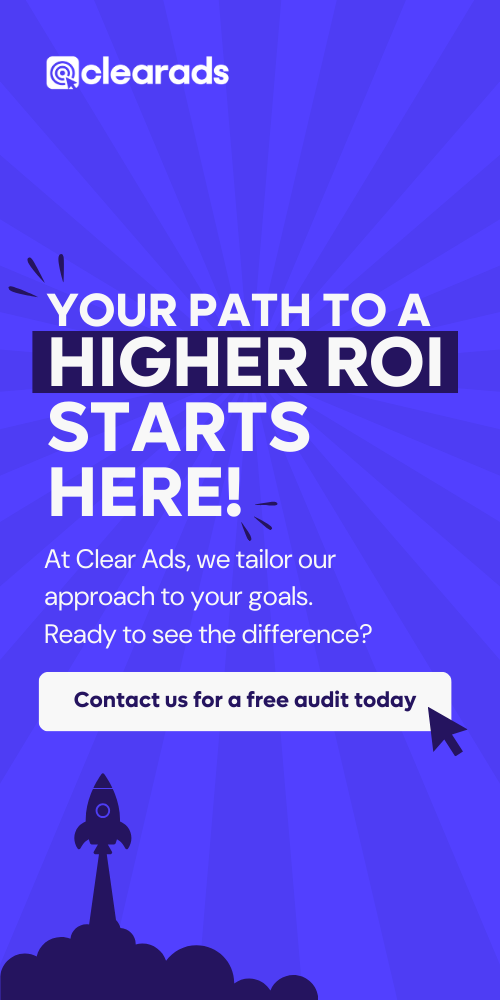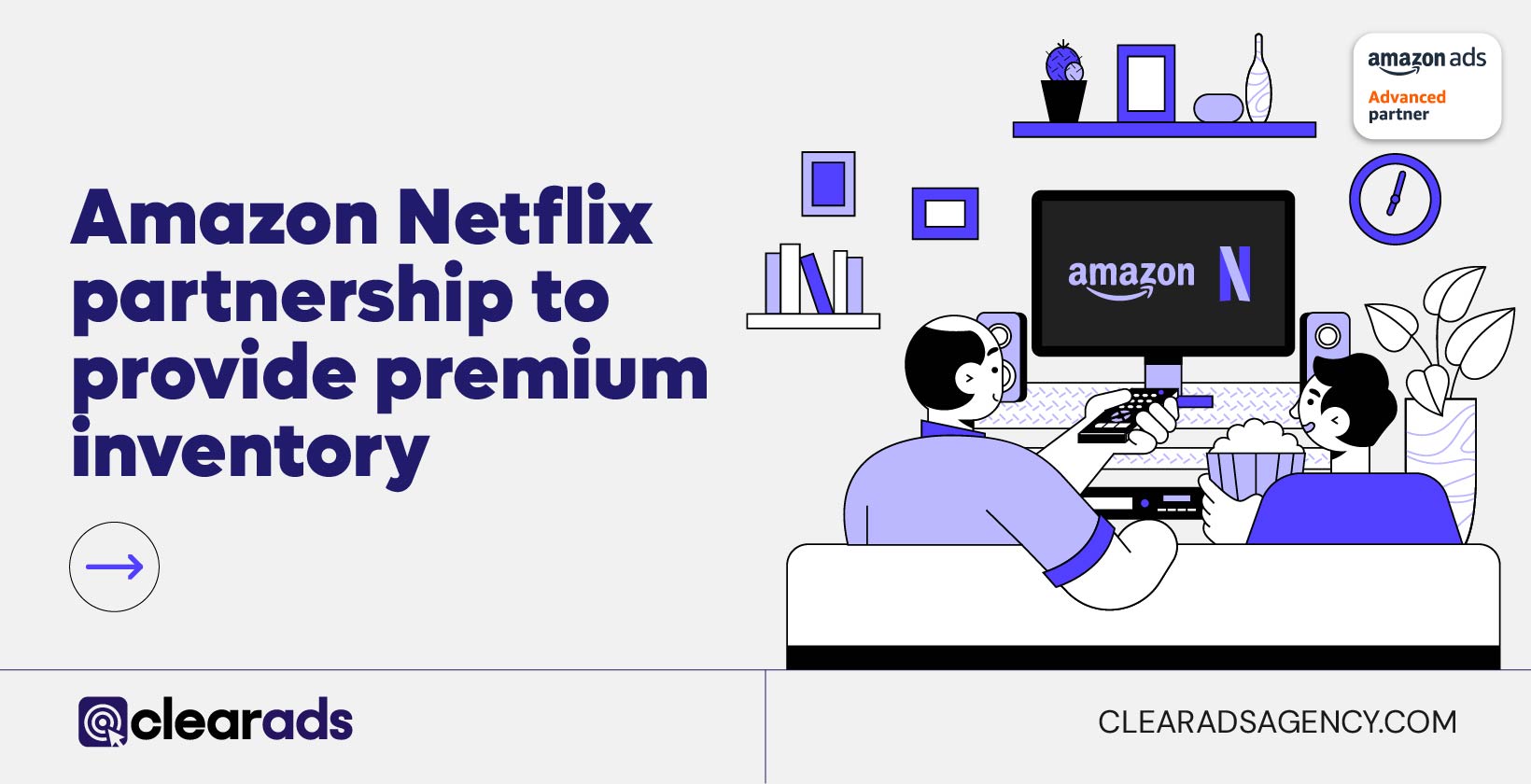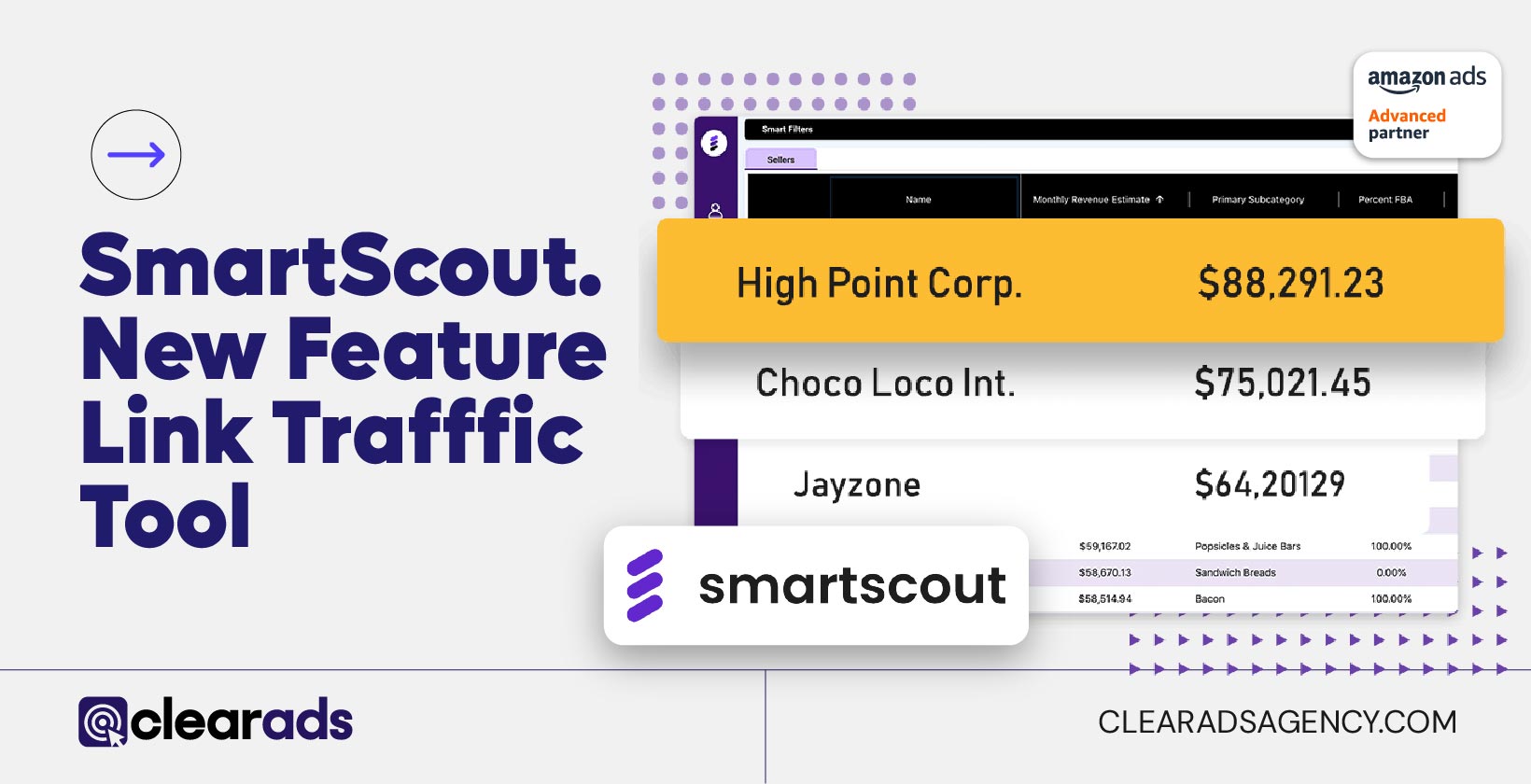If you’re selling on Amazon – or thinking of selling on Amazon – then you’re probably also interested in advertising your products across the platform. And the good news is that Amazon offers two very different ways for you to achieve exactly that:
Organic advertising and paid advertising.
Organic advertising on Amazon is free. It includes strategies such as in-depth keyword research, image optimisation, and review profile development to naturally improve the visibility of your products and get them in front of the right audiences.
Paid advertising is different. It is managed through Amazon’s advertising interface. Unlike organic advertising, it isn’t free. You need to spend money to make money.
There are two important questions sellers need to be asking themselves when considering an Amazon ads campaign for the first time.
- Can I afford to use Amazon ads?
- Can I afford *not* to use amazon ads?
Answering these two questions means understanding more about how much Amazon ads could cost you from a financial perspective while also understanding the business ramifications of going ahead, or sitting it out.
What Are Amazon Ads?
Before we start digging deeper into the cost of Amazon ads, let’s take a quick minute to explore what Amazon advertising is. At its most basic, Amazon advertising is a form of digital advertising that helps you promote products within your Amazon inventory to the right people at the right time. Amazon has built one of the most comprehensive advertising platforms in existence today, with various options for attracting and engaging with audiences at different stages of the customer journey.
The Different Types of Amazon Ads
‘Amazon ads’ is an umbrella term incorporating many different ad types. How much it costs to use each ad type (and, more importantly, to use each ad type in a way that brings actual value to your business) will vary. Some ads are considered self-service ads, while others require more interaction with Amazon reps.
Self-service ads
Self-service ads are just what they sound like; they’re ad types you can design, launch, and manage on your own through your Seller Central interface. You’re in charge of what you do – and when – without the need to work with an Amazon rep. Currently, there are three types of self-service ads available to Amazon sellers:
Sponsored Products Ads
Sponsored Products Ads work to promote individual products within your inventory. Ads may be displayed within the Amazon search engine results pages (SERPs) or on competitor product pages. When clicked, users are directed to the product listing.
Sponsored Brands Ads
Sponsored Brands Ads work to raise awareness of your brand as a whole, rather than of individual product types. Previously known as Headline Search Ads, these campaigns drive traffic to your ‘store’ where shoppers can browse and learn.
Sponsored Display Ads
Sponsored Display Ads are slightly different to the other two ‘Sponsored’ ad types in that as well as working to promote your products across the Amazon platform; they also promote products on third-party websites. This makes them suitable for awareness.
Premium Ads
Premium ads do not usually fall under the ‘self-service’ category. Instead, they are typically designed, launched, and managed by a dedicated Amazon Advertising team, and, as such, you can generally expect to need more significant investment.
Amazon Demand Side Platform
The Amazon Demand Side Platform, or DSP, allows sellers to purchase ad space programmatically. Ads may be displayed on the Amazon platform, across other Amazon-owned websites such as IMDB or third-party platforms.
Audio & Video Ads
Audio and video ads are those ads which are specifically displayed through Amazon’s audiovisual publisher channels. This may include Amazon Alexa-enabled devices (e.g. Fire TV or Echo) and associated channels such as IMDB TV.
How Do Amazon Ads Work?

Different Amazon ad types work in different ways. Sponsored Products and Sponsored Brands, for example, are keyword-based. This makes them pretty similar to Google’s ranking algorithm in that Amazon looks at what users are searching for, looks at what ads incorporate those same – or similar – terms, and pairs them up.
Premium ads, and Sponsored Display Ads, work in a slightly different way. While campaign setup still involves the inclusion of keywords, the underlying mechanism relies on user behavioural cues rather than the specific terms they search for. As a result, the activity that a user performs online – what they’ve previously looked at, what they’ve shown interest in – plays a massive role in determining what ads are displayed to them.
The types of signals that Amazon will use to match ads to audiences will depend on the targeting you choose. For example, viewing history signals will be used for view-based targeting campaigns, while browsing behaviours will be used for interest-based targeting campaigns. Product-based targeting campaigns will use signals from how a user has previously interacted with that product or with a similar product type.
How Much Do They Cost?
How much Amazon Ads will cost your business really depends upon the type of ad that you choose and how much you’re willing to invest in those campaigns.
Self-service ads, for example, are exclusively PPC (pay per click) based. With these ads, sellers bid for ad space and only pay a fee when a user clicks on that ad. The cost of PPC ads varies wildly, and it’s impossible to give a definitive, expected price.
It’s a similar situation with premium ads, except the cost isn’t just based on clicks but on the fees charged by Amazon for utilising a premium service. For the Amazon DSP, for example, custom pricing is developed for each retailer, and it’s impossible to say how much you could end up paying with certainty. So the best action in this circumstance is to request custom pricing from Amazon.
So as we can see, there’s no set standard for both types of paid Amazon advertising. It’s primarily based on how much you bid on each campaign. But then, there is also a multitude of influencing factors that can have a significant impact.
Bid Types

Every single Amazon ad that works on the cost-per-click model will require you to set a bid for each campaign that you choose to run. This bid will be a significant deciding factor in how much your Amazon ads will cost you, as your bid refers to how much you pay Amazon to display your ad to your target audience.
However, there isn’t just one type of bidding; there are three different options:
Fixed Bidding
A fixed bid never changes. Once you set that bid, that’s precisely what you’ll pay for ad space, making it a great way to control and manage your Amazon Ads costs. For example, if you launch a campaign with a bid of £1, you’ll always pay exactly £1 for ad space.
Dynamic Bidding
Dynamic bidding gives Amazon the ability to reduce your bid (dynamic bids – down only) by up to 100% or reduce and increase your bid (dynamic bids – up and down) by -100%, +50%, or +100%, depending on how likely the ad is to spark a conversion.
Bid By Placement
It’s also possible to bid by placement, spending more – or less – based on where the ad is displayed. Not all ad space was made equal, and sellers are often willing to bid more for prominent positions like product pages or at the top of the Amazon SERPs.
You can find out more about this by reading our bidding strategy guide.
What Influences Amazon Ad Costs?
Bids are important. Of course, they are. And they’re an excellent starting point when trying to estimate the cost of Amazon Ads. However, how much you’ll pay for advertising depends on many other factors.
Here are just some of the elements that can impact the price of your amazon Ads:
Average CPC
While you may be setting your bids at a specific price point, the average cost per click may not be anywhere even close to your specified bid if you’re using dynamic bidding.
So, for example, imagine you’re using dynamic bidding – up and down. You could be paying much more than your standard bid, meaning Amazon Ads could be costing you much more than you bargained for.
If using dynamic bidding – down only, however, the cost could be much less than you anticipated. The truth is that the average cost per click on Amazon has risen by 22% over the past few years, but it’s still less than Facebook, Google, Pinterest, and more!
Targeting Options
Again, if you’re using dynamic bidding, the number of clicks you get will also influence the cost of Amazon ads. The number of clicks is almost always closely associated with the targeting options you choose for your campaigns.
There are two types of targeting:
Keyword Targeting

Keyword targeting allows you to target audiences based on the search terms that they use and how those terms align with the keywords included in your campaigns. There are three match types:
- Broad match (somewhat similar terms).
- Phrase match (mostly similar terms).
- Exact match (terms that are the same).
Costs may be more for broad and exact matches. Broad match means few clicks from many users, while exact means lots of clicks from few users. A phrase match may often be that ‘happy middle ground’ for those concerned about the cost of Amazon Ads.
Product Targeting
Product targeting works similarly to keyword targeting, except instead of displaying ads to users searching for the same terms as you’ve included in your campaign setup, you’re displaying ads to users who have shown interest in similar products.
Product targeting can sometimes mean your Amazon Ads cost more, but at the same time, they’re designed to help you connect more easily with your customers. As a result, this act can generate more revenue and profitability.
Just to make things a little more complicated, you can use automatic or manual targeting. Automatic targeting is most straightforward, and it’s often the strategy that many sellers opt for when they’re just starting with Amazon Advertising. It means that Amazon handles all the targeting work for you, making decisions based on what the algorithm believes is best for your campaign.
However, manual targeting may be better from a financial perspective. It can prove to be much more work, but it puts you – the seller – in complete control over how and when your ads are displayed. In addition, through manual targeting, you can decide the specific keywords and product browsing behaviours you want your ads to be associated with, giving you more control of your costs.
Managing Your Budget
The most important thing to remember here is that you should never pay ‘whatever it takes’. At ClearAds, we’re always trying to communicate that you can’t succeed in the competitive Amazon marketplace without investing in advertising in one form or another. But it’s equally as important – if not more so – to ensure you stick to an affordable budget and don’t overspend.
Budget management should always be central to any good Amazon advertising strategy. Learn more in our guide to budget management and setup.
How to Reduce Amazon Ad Costs

If you ask any Amazon seller whether they want Amazon Ads to be more expensive or more affordable, they’re always going to say more affordable! So no matter what the situation, every Amazon seller will always be looking for ways to lower the cost of their ads. The good news? There are lots of strategies to help:
Effective Keyword Research
Make sure you’re only bidding on those keywords that are most likely to result in a conversion. Examine competitor keywords, look at Amazon keyword reports, and utilise third-party keyword tools to ensure you’re not wasting money bidding for ad space that’s doing nothing positive for your business. Instead, drive your financial resources into powerful keywords that generate real value. Remember, ‘value’ might not always mean keywords that generate a sale, but keywords that help raise awareness of your products or brand, sparking the powerful halo effect.
Product Listing Optimisation
One hugely frustrating thing we see as Amazon advertising experts is that some sellers tend to drive all their efforts into advertising, completely overlooking the crucial deciding factor: the listing page.
Advertising is a two-step process. The first step is attraction: the ad itself. The second is the consideration stage. Here, the potential buyer determines whether they want to buy the product. We see this on Google all the time. Business owners pour everything they have into getting to the top of the SERPs, and when users click through to the website, there’s nothing there to keep their attention. It’s the same with Amazon. There’s no point paying for clicks if users land on a product listing page that fails to impress and doesn’t generate the desired conversion.
Monitoring & Optimising Campaigns
Finally, an excellent way to reduce costs is to be selective over the campaigns you’re funding. Only invest in those campaigns that are consistently bringing value. Be ruthless and get rid of anything that’s not working.
Keep monitoring your campaign performance through Amazon, identifying weaknesses and vulnerabilities, and optimising these areas to make the campaign more robust. If it still doesn’t have what it takes, don’t keep it merely as a money sink. Instead, end the campaign, and build a new one based on your insights, a new one that’s firmly rooted in advertising strategies that you know work for you and your business.
Are Amazon Ads Worth the Investment?

That’s something that only you can decide.
Do Amazon Ads cost money? Absolutely.
Can you afford not to use them? That all depends on your business.
What we do know is that, over the past few years, Amazon has become increasingly competitive. As more businesses moved online during the pandemic, Amazon – as the world’s largest online marketplace – was the natural choice for most retailers.
Today, the platform is more heavily saturated than ever before, making it harder for the average seller to stand out amongst the crowd. Amazon Ads are undoubtedly the most effective and efficient way to boost visibility. And it’s clear that those businesses that aren’t investing in advertising are getting lost amongst the noise.
We can’t tell you if Amazon Ads is a worthwhile investment. We wish we could! What we can tell you is that, without them, the future of your Amazon business could be called into question. Can you survive without the ability to promote products?
Getting Started
Getting started with Amazon Advertising is probably more straightforward than you may think. The very first step doesn’t involve using the Amazon Ads platform at all; it simply involves spending some time thinking about your desired advertising goals.
There are many possible goals that you may have for your business:
- Awareness: Boosting familiarity, reaching new customers, telling your story
- Consideration: Reaching out to shoppers in the ‘shopping mindset’
- Conversion: Driving more sales and engaging with high-intent customers
- Loyalty: Encouraging repeat custom and building brand advocates
By determining what you want to gain from all this, it becomes easier to select a campaign type, set the most appropriate bid, and gain a better understanding of how much Amazon Ads could cost your business. In addition, it helps you to plan smartly.
It’s often a good idea to start with one of the easier, more straightforward PPC campaigns, such as Sponsored Products. Sponsored Products and Sponsored Brands are designed to work with a wide variety of budget types, and they increase the chance of you getting actual results without risking investing more than you can afford. In most cases, Sponsored Products and Sponsored Brands prove to be the most cost-effective ad types on Amazon today.
PPC ads, of course, have the natural advantage of cost-effectiveness when they’re set up correctly. While they do cost money, you only pay when your ad is clicked on. PPC ads are a fantastic way to get started with Amazon Ads and maintain complete control over your advertising costs until you feel confident enough to extend further.
Useful Resources
At ClearAds, we know that, during this challenging recovery period, businesses cannot afford to be ‘loose’ with their finances. Every financial decision must be made with thought and confidence, including advertising decisions. We get it.
And to ensure we’re offering the best possible support to businesses at this time, we’re pleased to offer a wide range of valuable resources, from bidding guides to advertising tips and everything in between. So why not browse through our guides for more help in getting started? If you have any specific questions or need tailored support and advice, contact the ClearAds team today.


